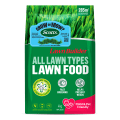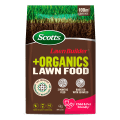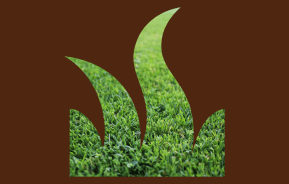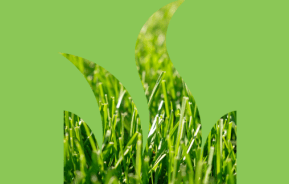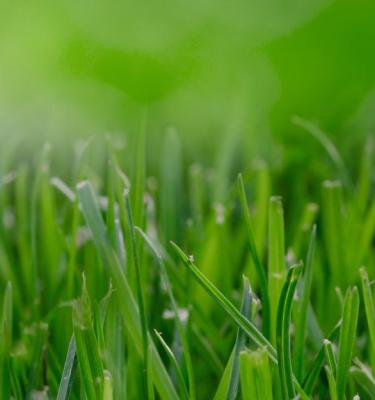
Blades of Glory: How to properly feed your lawn
When you’re new to lawn care, picking the right fertiliser can be daunting. Maybe you’ve already been through it: standing in front of the shelf at your local hardware garden centre, staring up at all types of options, making all types of claims. Overwhelming, right?
To make it easier for the curious, we’ve put together a simple guide below…
THE GOOD, THE BAD & THE GROWTHY - YOUR GUIDE TO FERTILISER TYPES
Conventional
A conventional or traditional fertiliser is lawn food at its most basic. While they’ll often be the cheapest on the shelf, it’s very rare that one of these will be the best option for your lawn.
Key Features:
• Crystalline or powdered appearance
• High application rates
• Short term feeding
• Surge growth (ie. a rapid response that tails off quickly)
• Frequent applications
Traditional lawn fertilisers tend to drop their nutrient load the moment they’re watered in. This leads to a much higher rate of nutrient run-off into drains and waterways.
Basic fertilisers rely on the lawn being able to absorb what it can as the nutrients flush through the soil. It means you’ll have to apply the fertiliser more frequently (every month to six weeks), which will eventually have a negative effect on soil health and chemistry.
SLOW RELEASE
Compared to the basic options, slow release fertilisers are much more advanced in their nutrient delivery.
The best formulas will feed lawns for up to three months.
Key Features:
• Slow and continuous release of nutrients
• No nutrient dump after watering in
• Low application rate (three per year)
With a quality slow-release formula like Scotts Lawn Builder, you can expect more consistent growth and greening across the whole cycle of your application. Cheaper slow-release formulas will drop a lot of their nutrients early on, giving a surge of growth and greening but tapering off quick. Choosing a higher-quality product stops this kind of surge growth and prevents nutrient run-off too.
NATURAL OR ORGANIC
In the world of fertilisers, the word ‘organic’ can be confusing. While a traditional blood-and-bone fertiliser will certainly have organic materials in it, it’s probably more accurate to describe it as “organic-based”. So how do you know?
Your safest bet to find a true organic fertiliser? Look for the Australian Organic Certified logo on the pack. Anything that’s 100% organic should have the credentials to back it up.
Fertilisers are usually split into two main groups – organic (natural) and synthetic (manufactured). There is also a third group - a blend of the two.
Scotts Lawn Builder Plus Organics Lawn Food & Soil Improver combines the attributes of a quality slow release fertiliser with the benefits of added natural ingredients like seaweed, fish, manure and bio stimulants.
It’s the best of both worlds.
TOP TIP
High nutrient run-off isn’t just bad for the environment. It sucks for your wallet too, sending valuable nutrients far away from their targets. Talk about money down the drain…
GOOD CHEMISTRY
Your guide to NPK
Lawn fertilisers can sound pretty technical. But the good news? You don’t need a science degree to pick the right one. As experts ourselves, we’ve done the hard yards to find the perfect balance of nutrients for your particular lawn needs.
However, it does help to understand each of the three letters in your fertiliser’s NPK ratio.
N is for Nitrogen
Nitrogen is the main contributor for green growth that looks leafy, lush and luminous. Most lawn fertilisers have a high N component for this reason.
P is for Phosphorus
Phosphorus is the main player in the development of flowers and fruit, so lawn food typically won’t have a lot of it (if any). It’s also good for root development and disease resistance.
K is for Potassium
Potassium is the overall plant health support nutrient. It promotes growth and vigour, helps plants resist disease, and keeps metabolic functions running smoothly.
BONUS POINTS:
S is for Sulphur
Sulphur promotes greening. It is one of the primary building blocks of chlorophyll, the pigment that gives plants their green colour. It also helps plants better utilise other nutrients.
Fe is for Iron
Iron is used to keep plants green; when a plant is low on it, it’ll start to turn yellow. Iron is usually found in soil, but can become chemically bound up if the soil pH is not between 5 and 6.5 (acidic).

